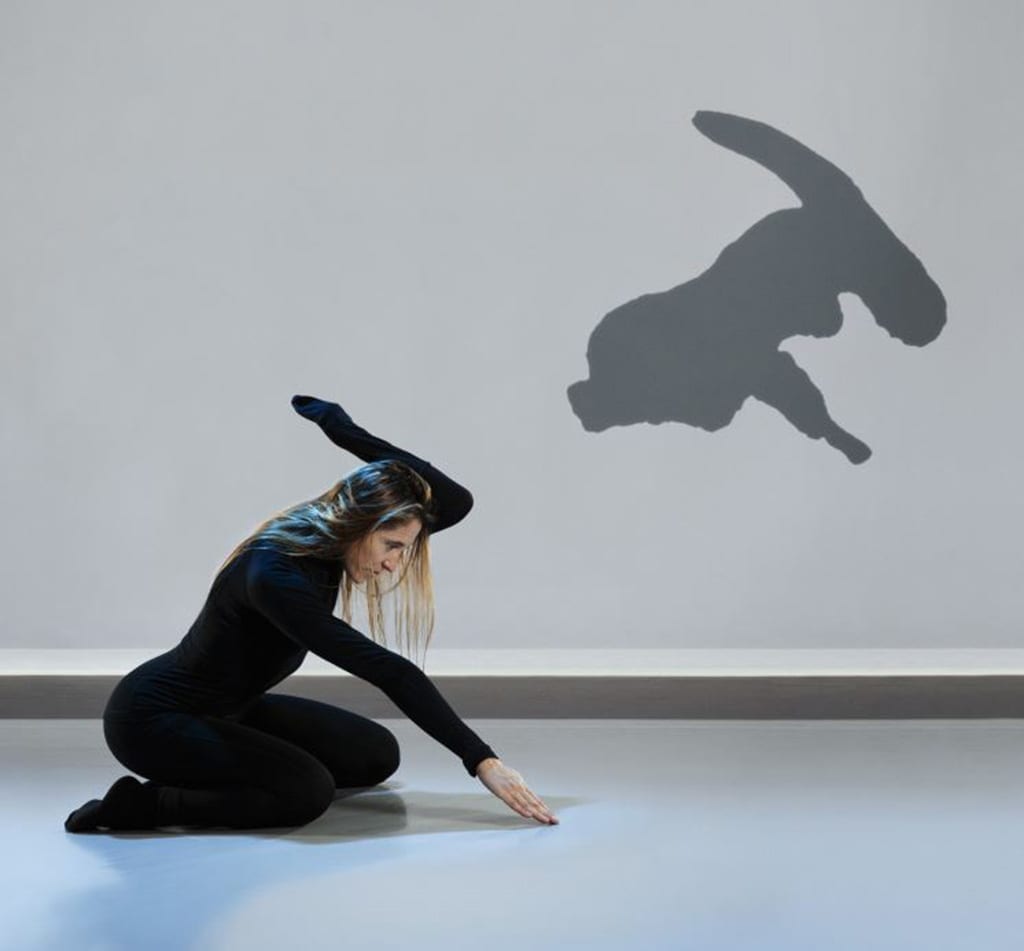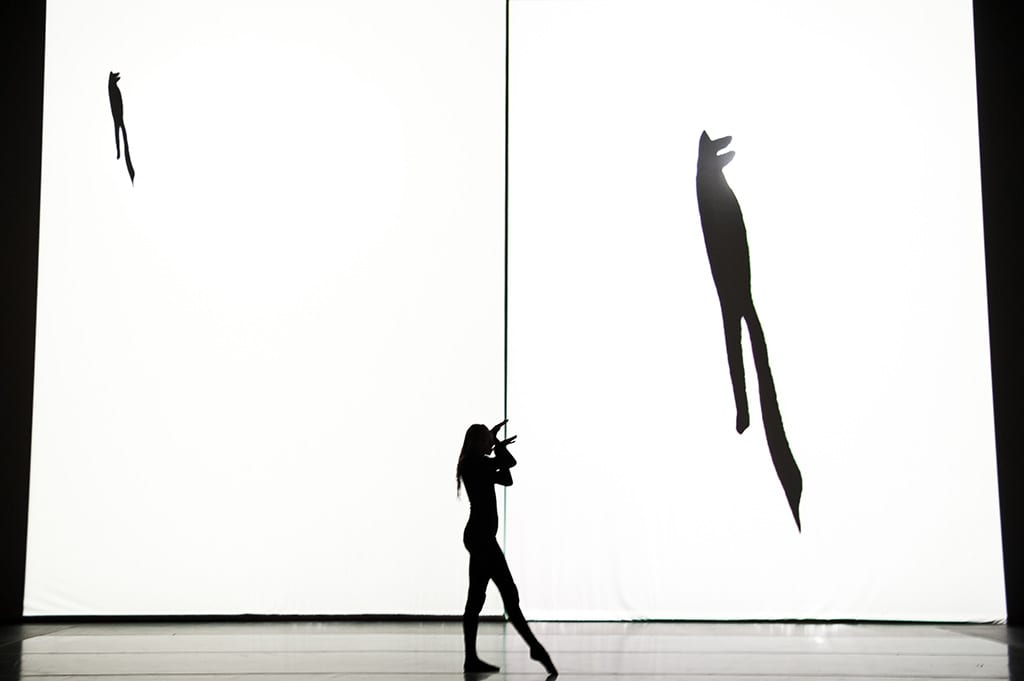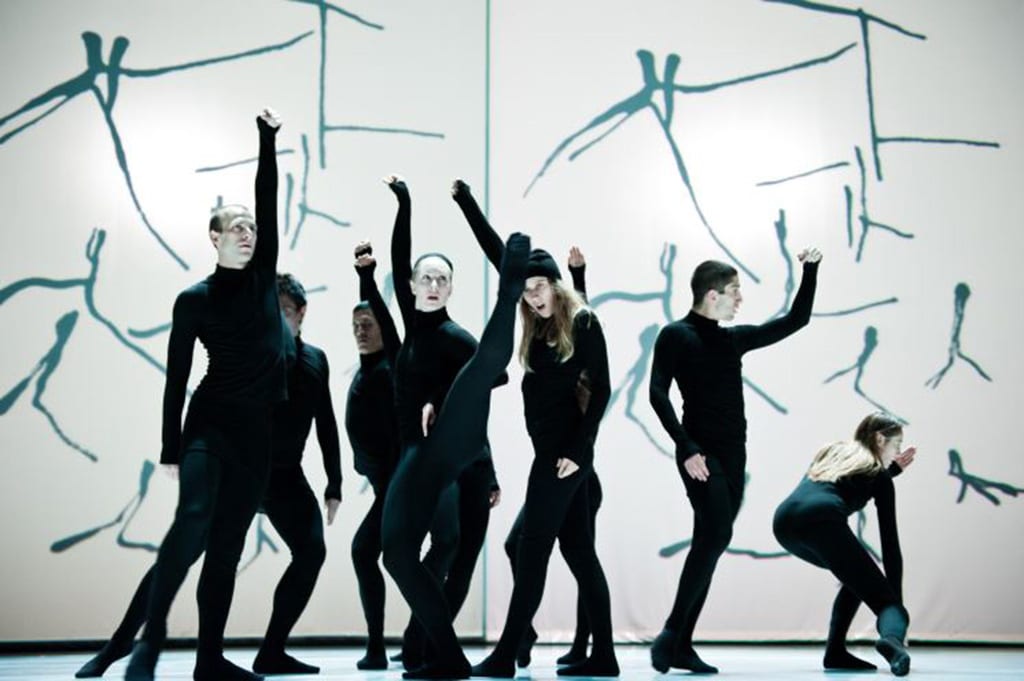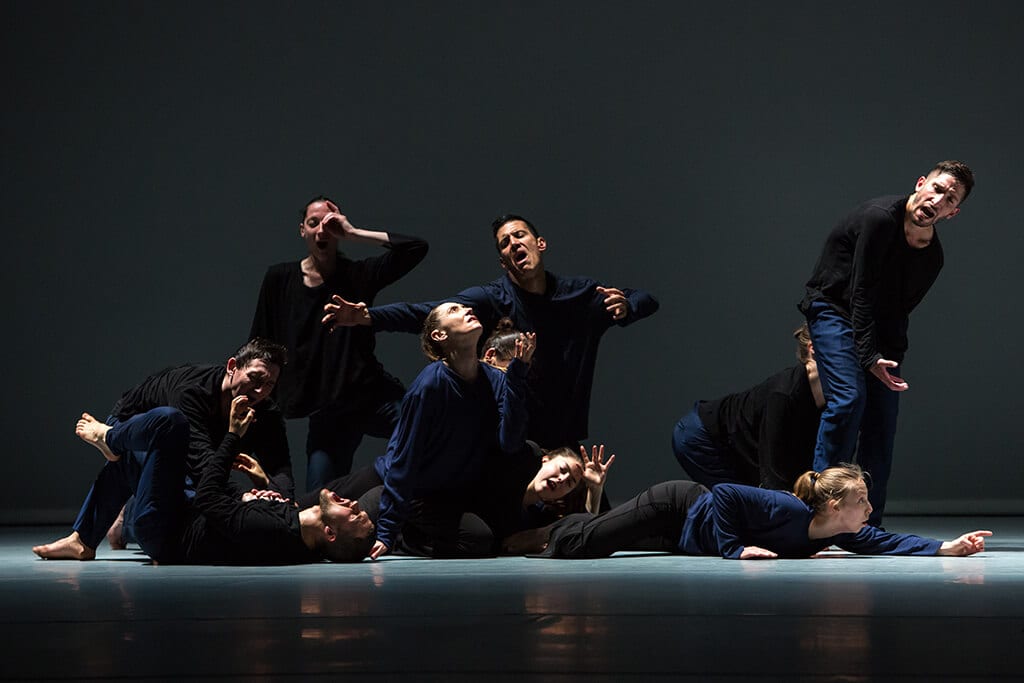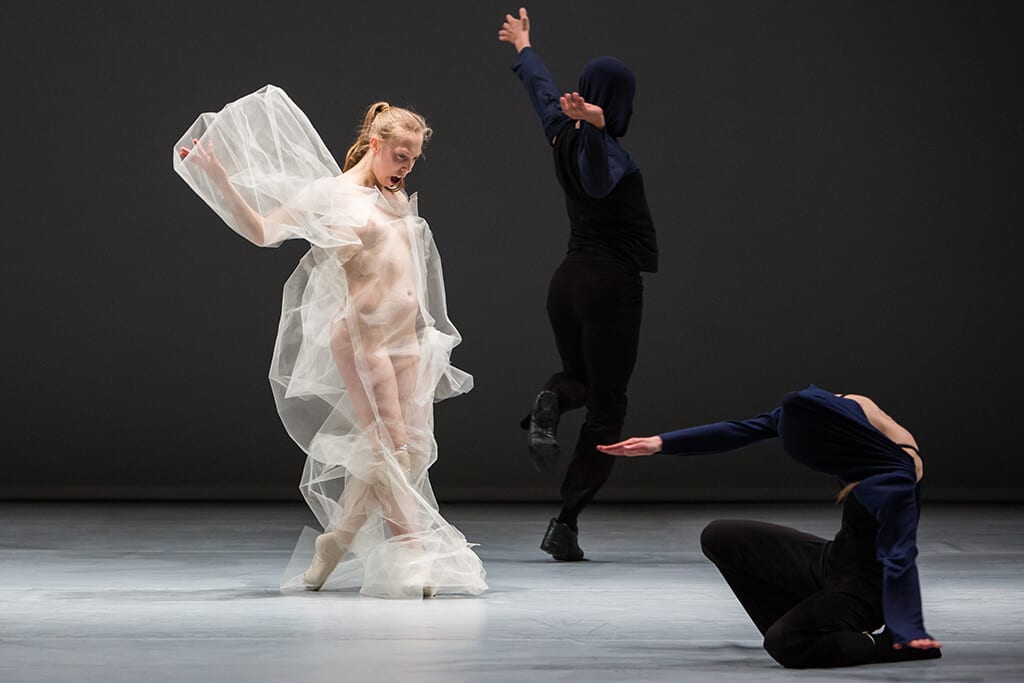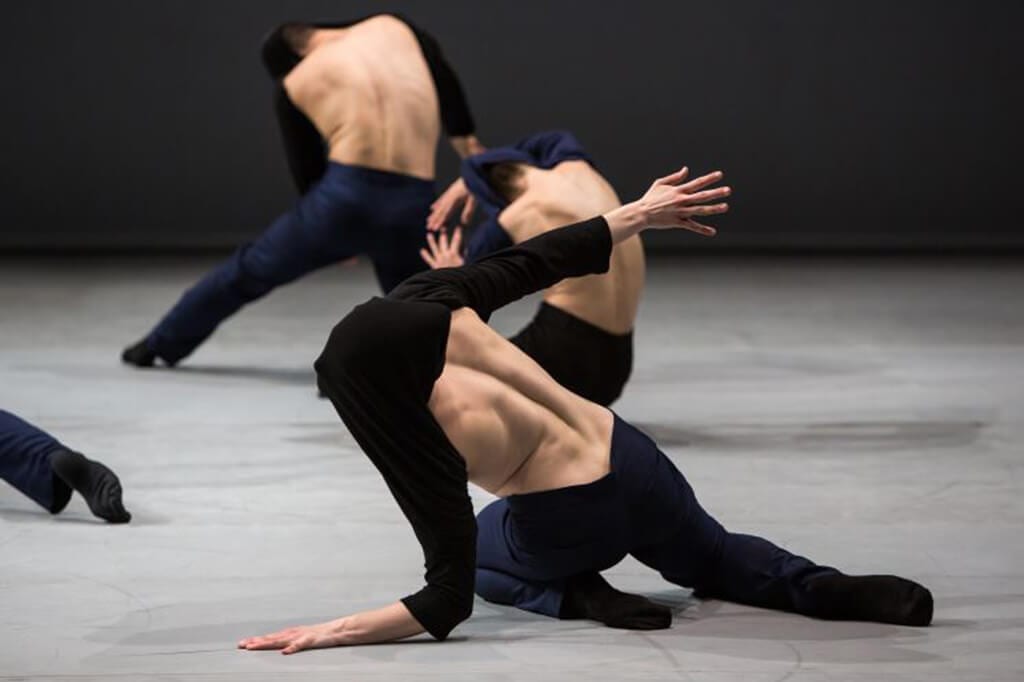For two days only Quebecois dancer and choreographer Marie Chouinard brings her company to Sadler’s Wells for the performance of two works. Chouinard has been a leading figure in the world of contemporary dance since the 1980s. Her dance sequences are well known for the way in which they evoke and create very distinctive, individual worlds which make generalisation across her output difficult. Her choreography combines traditional ballet elements with contemporary free expression, and is notably open to and mixed in with multimedia performance styles. Electronic music, video projection, recitation of text and exploration of the relationship between visual forms and kinetic manifestations are all present in the works performed here.
The first piece, lasting fifty minutes, bears the elusive title ‘Soft virtuosity, still humid, on the edge’. It is a new creation that explores the reactions of the human shape to the pressure and opportunities of different time signatures, where the body is seen both as malleable abstract form and also as an individual forming relationships with other individuals. The language of gesture and motion enacted on stage is also magnified and projected on a white backdrop. The electronic score produces sweeter and more emollient sounds for the human interactions, and grinding, harsh dissonances for the scenes of human anomie and conflict.
Some of the movement is on pointe or demi-pointe, and at other times dancers move helter-skelter. Sometimes they engage intimately with one another, as in the case of a couple, first female then male, who embrace as they sit on a spinning disc, like Tibetan statues. At other points figures lurch blindly across the stage with their shirts hooked up over their heads. This is highly imaginative work, almost a universal creation myth in which human beings discover for the first time what they are capable of ‘as if playing with the pause, fast and slow motion buttons.’
There are some problems and issues though: the soundtrack is gratingly repetitive at times, at odds with the poetry in motion on stage; and the video projection is overused, distracting attention from the detail of the actual dancing. Finally the device of using all the dancers in a tableau vivant that moves gradually from one side of the stage to the other is simply overlong. Initially it is touching to see the ten dancers strike attitudes in slow motion, like Michelangelo’s Captives struggling to be free; but after a while there is simply not enough happening dramatically to sustain concentration.
There were related frustrations with the second offering, Mouvements, based on a book of India-ink drawings and poem by Henri Michaux. Here the dancers, all dressed in black, assume poses and choreographed movements suggested by the abstract doodles, which are projected in parallel on the backdrop. The illustrations stand somewhere between Chinese brush-painting and the paper cut-out silouettes of Matisse’s Jazz. This translation from the visual to the kinetic to the verbal (in the form of the declaimed poem) is an exciting cross-fertilization of media that often are considered to belong in separate compartments. If only more dance companies would consider such exciting inter-textural collaborations.
However, it is seriously marred by a grating and over-amplified sound-track which made listening actively unpleasant. With such grace and variety of gesture and movement to look at it seemed entirely bizarre to set this piece to a sequence of sounds that belonged inside the Port Talbot steel works, or some such heavy industrial location. How much better to have framed this poetic and imaginative choreography within music from – say – Stravinsky’s neo-classical period that would have chimed resonantly with the refined historically aware modernism of Michaux’s aesthetic, and for that matter completed the final synergy between the worlds of word, picture, movement and sound.

